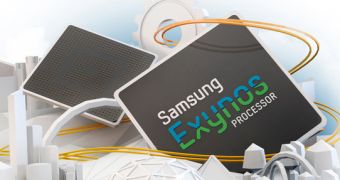Samsung's Exynos 5 Octa 8-core processor was formally launched back in March and is now getting a major upgrade.
Said upgrade is Heterogeneous Multi-Processing support, which can give 8-core and quad-core chips with two groups of different CPU cores the ability to use them all.
For those unfamiliar with the idea, some SoCs and ARM CPus have two different sets of cores.
It's like a type dual-CPU technology on a single die. You get four low-power cores, like Cortex A7, for when nothing strenuous is being achieved, and four, say, Cortex A-15 cores for more demanding workloads.
Sadly, the side effect is that only four cores are ever active at a time. Normally, I'd say this makes sense, since most programs don't use more than that for computing, even on PCs. ARM's big.LITTLE technology is commonly used to implement this.
Samsung doesn't like the limitation though, so it will implement HMP on Octa by the end of the year. No doubt it was spurred on by the fact that MediaTek already has a “True Octa Core” chip out.
Essentially, all eight cores will be usable at the same time if needed.
The chip will be upgraded by the fourth quarter of 2013, meaning that products like Galaxy Note III and Galaxy Note 10.1 could get it right off the bat. It might even overtake MediaTek, whose solution hasn't shipped in products yet, and won't for a while.
“It’s usually assumed that the big CPU will do all the performance-critical work, however, power-efficient little cores can handle many significant workloads all on their own, so the workload is balanced within the system,” said Taehoon Kim, vice president of system LSI marketing, Samsung Electronics.
For those that want a short rundown of what Exynos 5 Octa can already do, it features the 8-core setup described above, plus e-MMC (embedded multimedia card) 5.0 and USB 3.0 interfaces, full HD 60fps video hardware codec engine, a 13 MP 30fps image signal processor interface, and 12.8GB/s memory bandwidth (Full HD streaming over Wi-Fi). It can even render things in 2560 x 1600 pixels resolution.

 14 DAY TRIAL //
14 DAY TRIAL // 